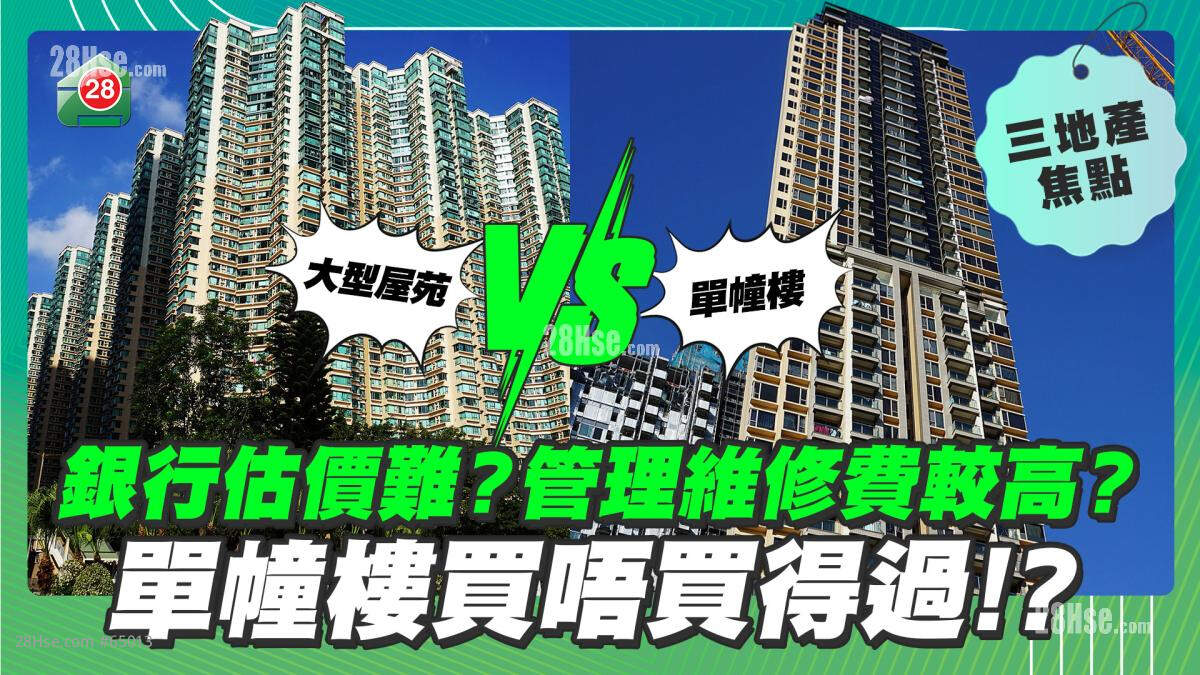For many homebuyers, choosing a property is never easy. Factors such as location, school network, layout, size, and surrounding facilities all come into play. Whether it's a new development or an older building, one decision remains: should you choose a large housing estate or a standalone building?
Buying a home is a significant life decision. What are the differences between large housing estates and standalone buildings, and what should you be aware of? This article will analyze the pros and cons of these two residential options in terms of management fees, sale prices, valuations, location, and amenities to help you make the best decision.
The primary difference lies in management and maintenance costs. Essential services like building management, cleaning, and repairs are necessary, and some properties even include clubhouses. Due to the smaller number of units in standalone buildings, the costs per household tend to be higher.
Regarding maintenance costs, under the government's "Mandatory Building Inspection Scheme," owners of private buildings aged 30 years or older must conduct prescribed inspections and repairs within a specified period upon receiving a statutory notice from the Buildings Department. This includes common areas, external walls, and specified projections and signage.
As facilities age, extensive renovations and repairs become inevitable. Depending on the management of the estate and its owners' corporation, maintenance costs are often shared among unit owners. In buildings with fewer units, each owner bears a higher share of these costs. Hence, purchasing a unit in a large housing estate generally results in lower fees.
Many standalone buildings offer studio or small-sized units, making them suitable for small families or those without a significant other. These units typically have lower prices per square foot compared to large housing estates, making them attractive to first-time buyers.
However, due to the smaller number of units in standalone buildings, transactions are less frequent. This limited data can lead to valuation discrepancies when banks assess the property's value. If the valuation falls short when applying for a mortgage, buyers may need to prepare a larger down payment.
Buyers should also consider the age of the property. Many standalone buildings with lower prices tend to be older. According to current guidelines from the Hong Kong Monetary Authority, the maximum mortgage term is 30 years, but most banks determine the maximum loan term subtracting the building's age from 75. Essentially, properties over 45 years old may not qualify for a 30-year mortgage.
Many standalone buildings are located in urban areas with well-developed communities and convenient transportation, catering to the needs of working professionals. For parents seeking a good school network, urban standalone buildings in districts like Kowloon City and Wan Chai are good options. Of course, large housing estates are also found in urban areas, but a higher budget is usually required.
Many standalone buildings do not have resident clubhouses. However, newer standalone buildings may include clubhouses, though typically smaller in scale, often featuring only a gym. In contrast, large housing estates usually offer more extensive facilities such as swimming pools, badminton courts, and bowling alleys.
Both standalone buildings and large housing estates have their advantages and disadvantages. Buyers should choose based on their own and their family's lifestyle needs and financial capacity. For those considering properties over 30 years old, it's important to inquire whether major renovations have been completed or are scheduled, to understand any potential future maintenance costs.
Like

